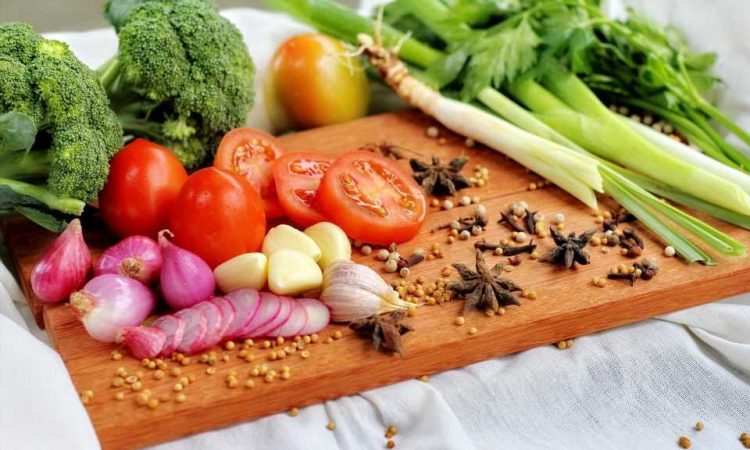
Researchers at the University of Sydney, Australia, have conducted a metadata analysis on vegetarian diets’ effect on people at high risk of cardiovascular diseases (CVDs). They found that the vegetarian diet was associated with significantly improved LDL-cholesterol, HbA1c (glucose level) and body weight.
In their paper, “Vegetarian Dietary Patterns and Cardiometabolic Risk in People With or at High Risk of Cardiovascular Disease: A Systematic Review and Meta-analysis,” published in JAMA Network Open, the team presents a systematic review and meta-analysis of randomized clinical trials (RCTs) on vegetarian diets’ effects in individuals with or at high risk of CVDs. It aimed to assess the association of vegetarian diets with outcomes, including LDL-C, HbA1c, SBP, body weight and energy intake.
In analyzing the data from 29 studies on 20 randomized clinical trials over 22 years with 1,878 total participants, the researchers found consistently positive outcomes for participants on vegetarian diets. The studies used were mainly conducted in the U.S. and also included studies from the Czech Republic, Italy, Iran, Korea, New Zealand, and the Republic of China.
Within the metadata were subsets of study parameters that all followed a similar result trend. Compared with participants’ usual diet, vegetarian intervention diets significantly lowered LDL-C by 12.9 mg/dL. Compared with external control diets, consuming a vegetarian diet was associated with decreased LDL-C by 6.6 mg/dL in a mean of six months.
Vegetarian diets were associated with similar LDL-C reduction in studies with (−7.2 mg/dL) and without (−6.8 mg/dL) energy restriction involved. Vegetarian diets even lowered LDL-C (−5.9 mg/dL) in a subset of studies with no physical activity intervention or requirements.
The most consistent weight reduction was observed in people at high risk of CVDs (−9.1 mg/dL). Among all different vegetarian diets, lacto-ovo (including dairy and egg) vegetarian diets were associated with the greatest reduction in LDL-C.
The most significant weight reduction was observed in people at high risk of CVD (−3.6), followed by people with type 2 diabetes (−2.8 kg). An unexpected signal between restricted and unrestricted caloric studies observed more than twice the weight reduction in vegetarian intervention diets without energy restriction.
Those with unrestricted (vegetarian) caloric intake lost an average of 4.7 kg compared to 1.8 kg for those with energy-restricted vegetarian diets. It is unclear if this indicates additional benefits of an all-you-can-eat vegetarian diet, specific limitations on the type of foods available, or hidden high-calorie deviations from participants on restrictive diets.
Not all vegetarian diets are alike
Vegetarian meals marketed for convenience may be high in calories, refined carbohydrates, hydrogenated oils, high-fructose corn syrup, sucrose or artificial sweeteners and salt.
A higher risk of CVD and diabetes is possible on a vegetarian diet if the veggies pass through a deep fryer first. Foods rich in trans fatty acids and salt are associated with a 32% higher risk of coronary heart disease and a high risk of type 2 diabetes.
While a meta-analysis of 20 past trials cannot control for the wide range of diets included in those studies, which ranged from vegan to vegetarian (allowing for eggs and dairy), the overall signal from these diverse vegetarian diets was clear.
The vegetarian diet is associated with significant improvements in LDL-C, HbA1c (glucose level) and body weight in individuals with type 2 diabetes or at high risk of CVDs.
The data suggests that vegetarian diets might have a synergistic (or at least nonantagonistic) use in potentiating the effects of optimal drug therapy in the prevention and treatment of a range of cardiometabolic diseases.
More information:
Tian Wang et al, Vegetarian Dietary Patterns and Cardiometabolic Risk in People With or at High Risk of Cardiovascular Disease, JAMA Network Open (2023). DOI: 10.1001/jamanetworkopen.2023.25658
Journal information:
JAMA Network Open
Source: Read Full Article
